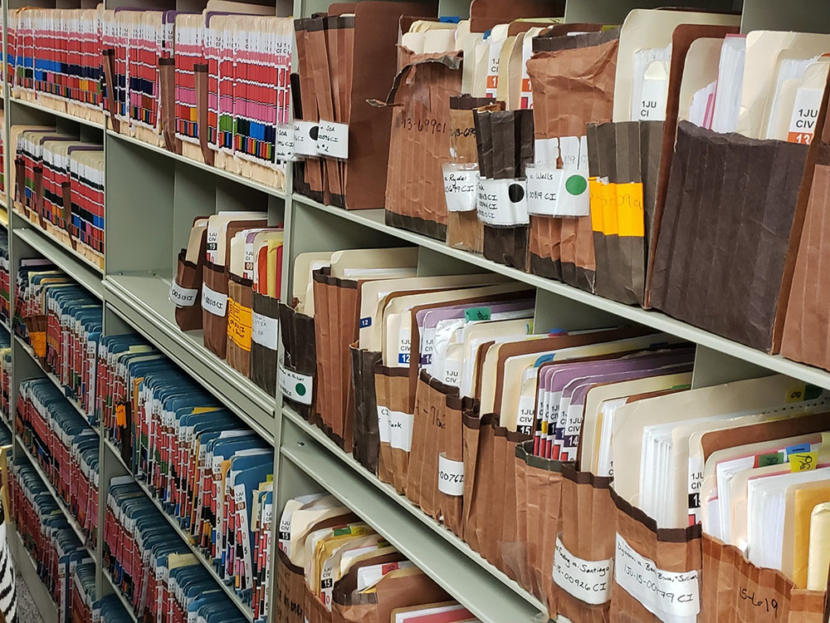
There are thousands of open child welfare cases in Alaska.
These could be anything from child abuse cases to divorces. The cases are complicated, and they take a lot of people and time — and communication — to resolve.
Dozens of people flew into Juneau in early December for a training program aimed at getting everyone involved in child welfare cases on the same page.
Among them were Bart Meyer and Stacey Wayne. The two started a mediation business together in Sitka about a year ago.
“I think we’re the only couple in the state that offer mediation together,” Wayne said. “Most mediators work independently, but we always work as a team.”
Wayne said that it has been helpful to have two genders in the room when they’re mediating — so that everyone is comfortable that they’re going to be treated fairly. She said those mediation techniques they’ve learned have also worked their way into the couple’s personal lives.
“I thought that I was good at conflict resolution but … I learned a lot of tricks I wished I’d had when I had younger children,” she said. “Now I apply them to our combined four children, much to their dismay. I think they do hear us trying our mediation tactics and call us out on it — but they are useful.”
The core of the couple’s business is working with the state court system to help resolve disputes in legal cases.
They came to Juneau to learn about handling child welfare cases. In Alaska, they’re called “child in need of aid” cases, or CINA cases. There are more than 3,400 of them open in the state right now. When one of these cases gets opened, a lot of people get involved.

Barbara Malchick, a former state lawyer, spent six years designing the curriculum for the CINA case training. She’s part of a Court Improvement Program that got a federal grant for the training.
“(CINA cases) are not handled the same way as your typical cases, like a criminal case where you have a prosecutor, a defendant and a defendant’s attorney. In our cases, we have multiple players,” said Malchick. “We have the Office of Children’s Services, represented by an attorney from the attorney general’s office. We have the parents, a mother, a father.”
Each of the parents in a case could have an attorney, and sometimes there are multiple sets of parents. The children are considered legal parties as well. They’re represented by a guardian ad litem — a person appointed specifically to represent the best interests of the child. If the child is Alaska Native or Native American, their tribe becomes a legal party to the case as well.
When you get all of those people in the room — the prosecutor, the defendant, all of the attorneys, the judges, the families — Malchick said it can be difficult to get everyone on the same page. And up until about nine years ago, there wasn’t any training in place for people who were involved in those types of cases in Alaska.
“I think it was pretty obvious from the beginning that, especially new practitioners didn’t have a clue,” she said.
Malchick said the curriculum has evolved to handle issues that come up routinely in cases.
“We have a module called ‘family well-being’ that talks about child development and the impact of abuse and neglect on children,” she said. “We have another full-day module that talks about services and resources, so the kinds of treatment resources that are available to help families to prevent the child abuse and neglect, or to help them get their children back.”
Everyone at the training in Juneau got a crash course in the state and federal laws applying to each case. Then they took a hypothetical child welfare case and ran it from start to finish.
Meyer and Wayne are not lawyers. They don’t give legal advice. Their job is to get everyone into the room together to work out some kind of agreement. Wayne said the training is a good way to meet people face-to-face that they’re often only communicating with via phone or digitally.
“It’s really great to sort of build those relationships. Having that kind of trust and familiarity when you’re trying to work through difficult problems with people is so important,” she said.
Sitka caseworker Krista Perala said that meeting in-person is impactful for her too.
“Normally I’m that looming voice on the phone,” she said. “I’m from Sitka, so we can’t travel every day to, like, a court hearing here in Juneau.”
Perala works for the Sitka Tribe of Alaska. She specializes in the federal law that covers child welfare cases when a Native American or Alaska Native child is involved. That law — the Indian Child Welfare Act — prioritizes a tribe’s jurisdiction and interest in maintaining cultural practices in a child’s life.
Perala said she’s in court nearly every day. But the opportunity to run through a case with everyone involved — to train with everyone — is invaluable.
“You have (the Office of Children’s Services) supervisors, assistant attorney generals, Judge (Amy) Mead is sitting right next to me. You have all of these amazing players that play a huge part in these young children’s lives,” Perala said. “They’re at the same table, learning the same exact thing, and you hear, ‘OK, well (the Office of Children’s Services) has challenges with this. How can we fix that?’ The tribe has challenges with this. How can we fix that?’ And everybody is at the table coming together and collaborating.”
The Sitka Tribe of Alaska has cases all over the state and country, and that means Perala is often working on cases where she’s communicating across cultural divides.
In Juneau, she said the training is another chance to educate people about the cultural practices that are important in an Alaska Native child’s life — and that is a step toward addressing racial disparities in the system.
“If you think about it, the majority of the race that’s within Alaska is Caucasian, and the minority is Alaska Native. But within the child welfare system, the majority race is Alaska Native when the minority is Caucasian.”
Perala said she values the chance to communicate across barriers.
Correction: A previous version of this story misspelled Barbara Malchick’s name.
